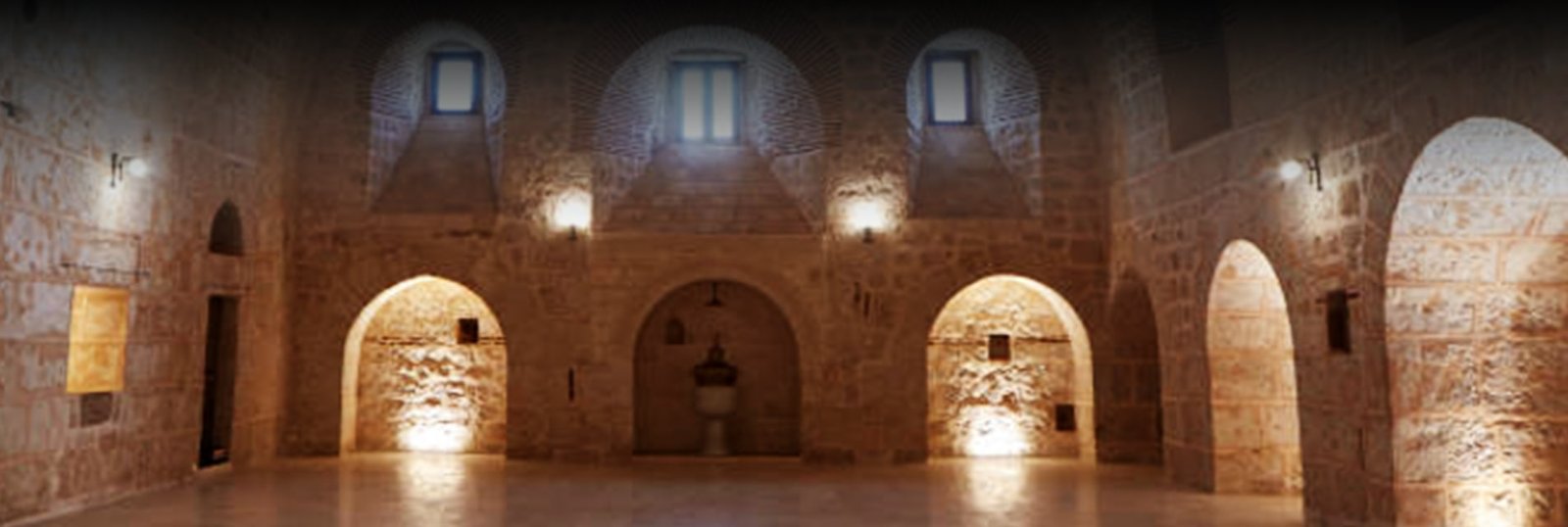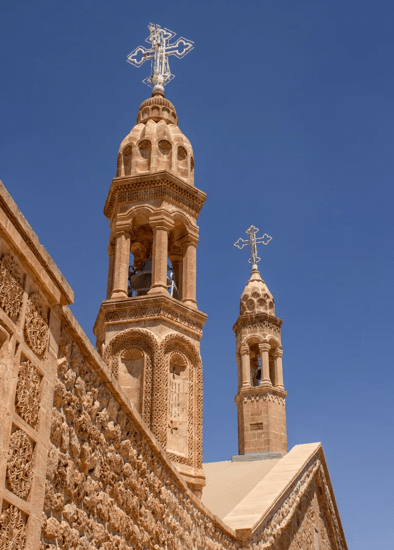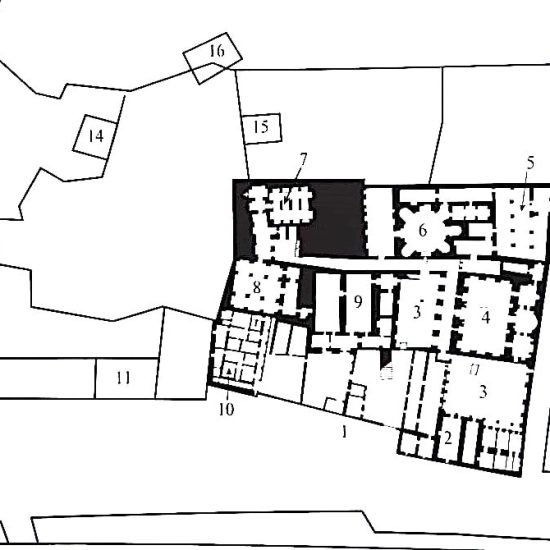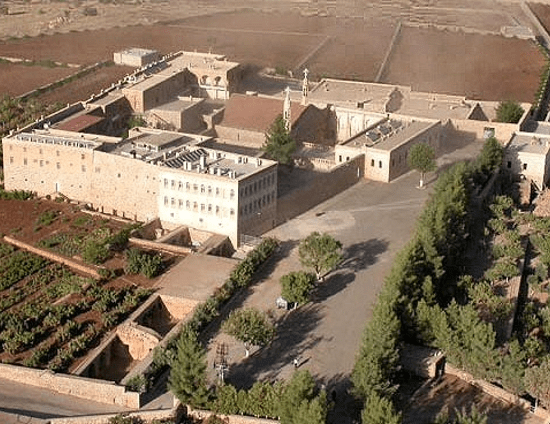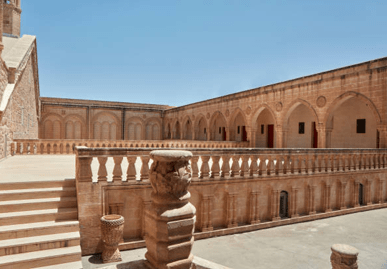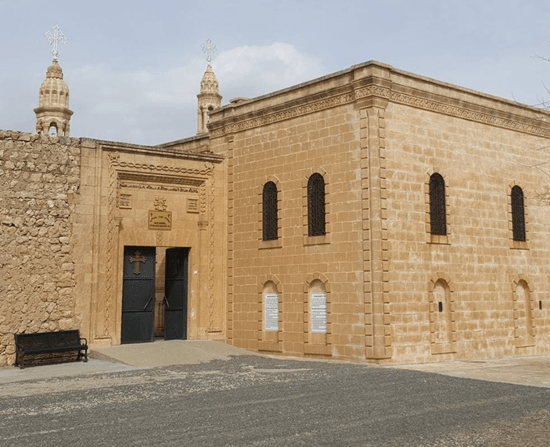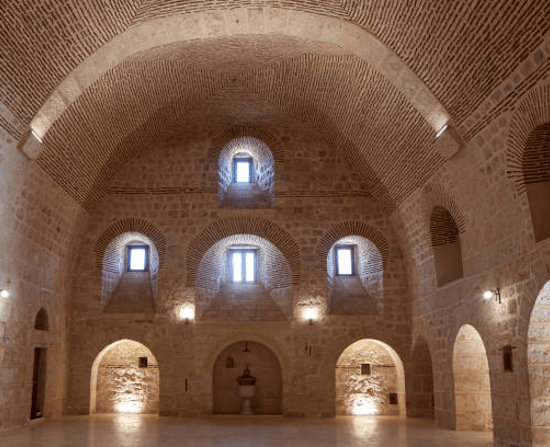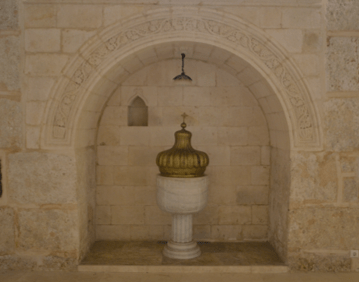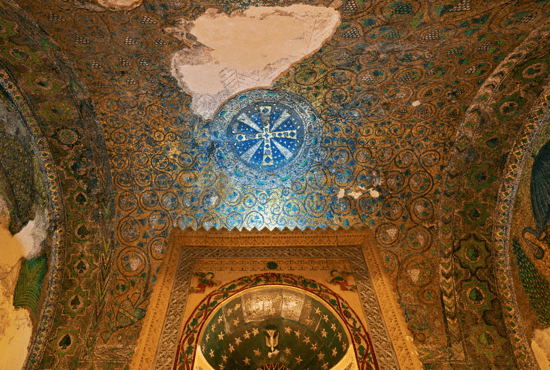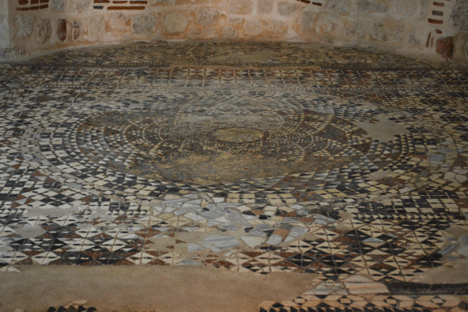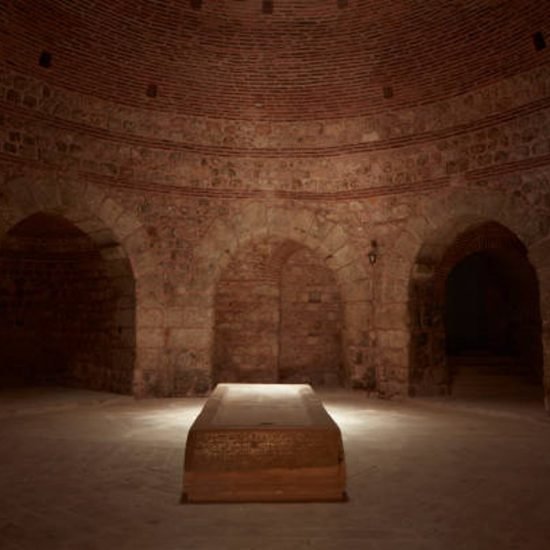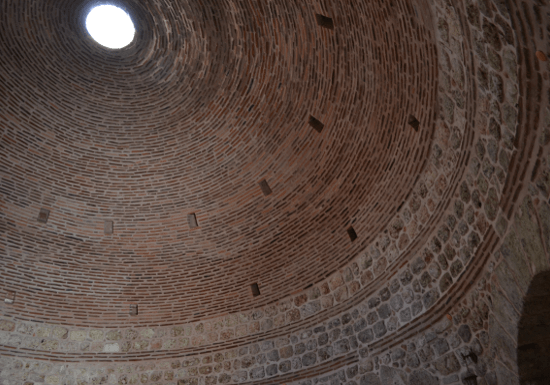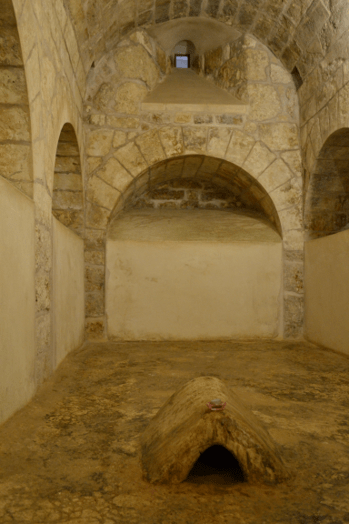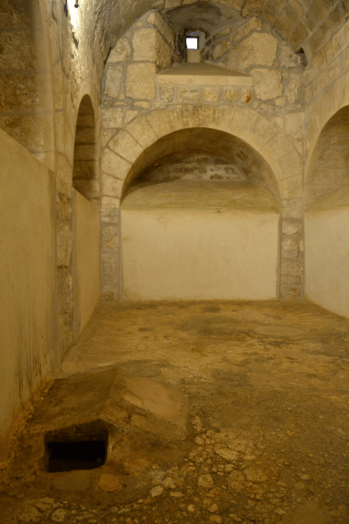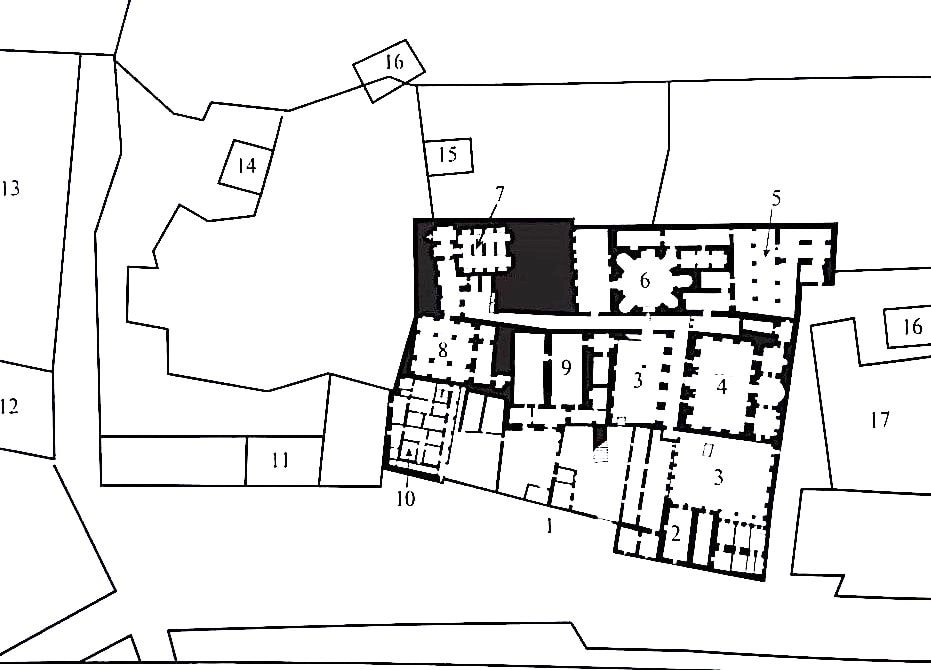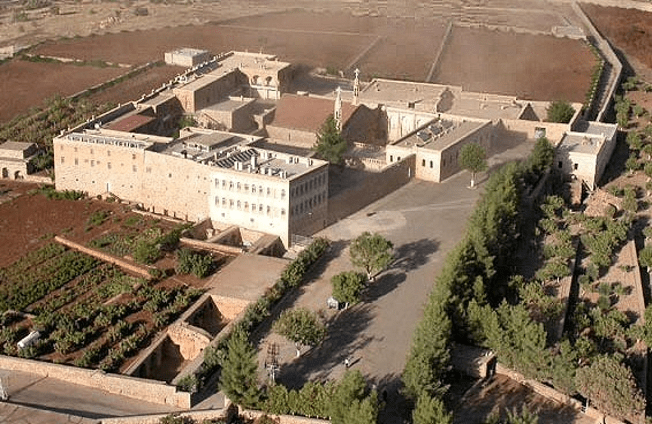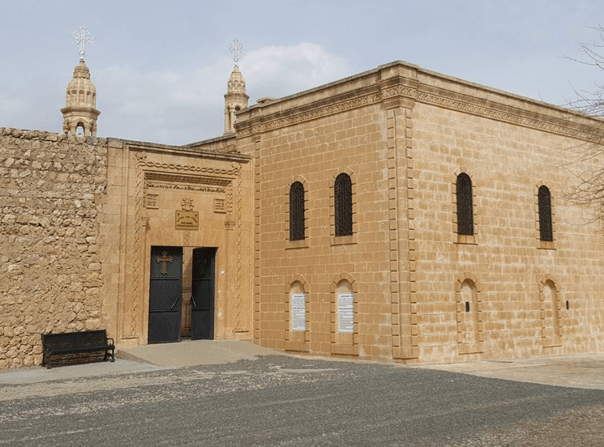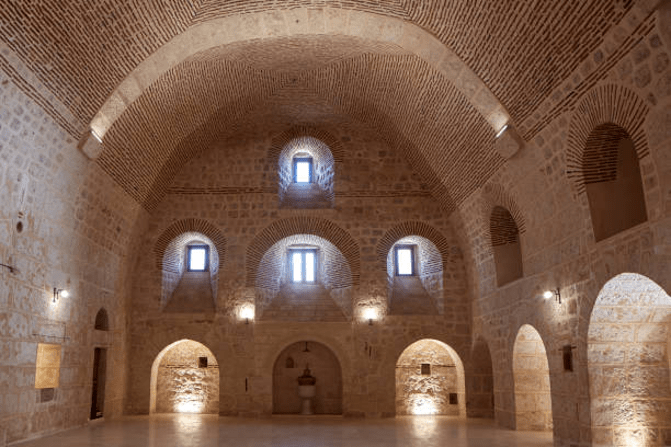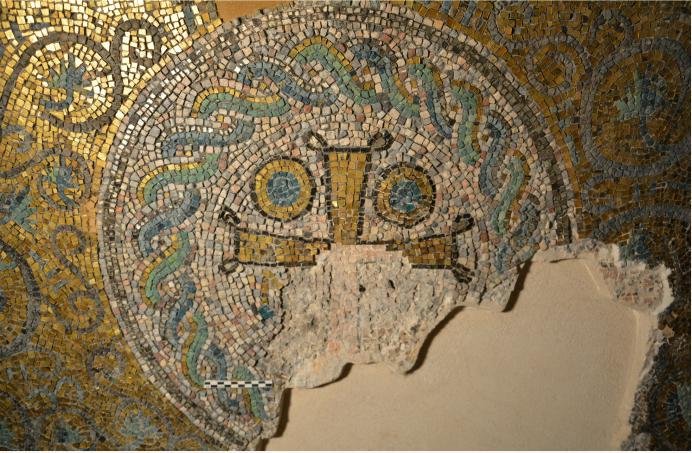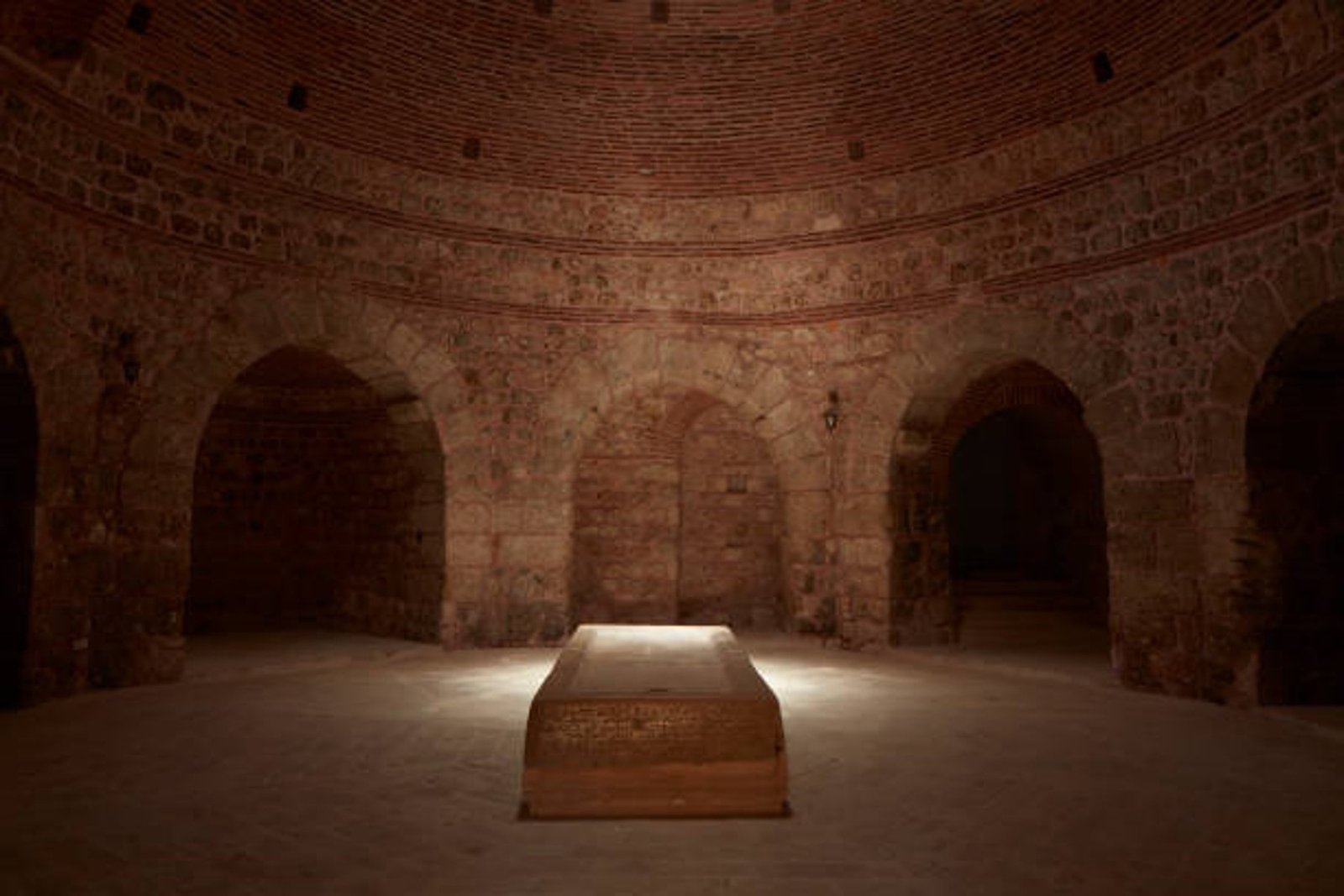The Monastery of Mor Gabriel
per person
The Monastery of Mor Gabriel, historically near the village of Qartmin and presently located 22 kilometers S-E of city of Midyat (Mardin Prov.), is the seat of the bishop of Ṭūr ‘Abdīn. It is a large monastery with buildings dating to various periods. The foundation myth of the monastery, in the hagiographic text named “Qartmin Trilogy”, claims that the Monastery of Mor Gabriel was founded in 397 CE. The Trilogy, mentions several early acts of imperial patronage in the reigns of Honorius, Arcadius, and Theodosius II, which are still difficult to confirm. Nevertheless, most of the surviving Late Antique evidence from the monastery (as for the impressive wall-mosaics and the opus sectile pavement) bears strong architectural similarities with other structures built by Anastasius as part of his constructive program focused on the city of Dara Anastasiopolis, and its surroundings, in the early sixth century. This, indeed, drew a large number of skilled workmen in the region. Therefore, the archaeologist Elif Keser-Kayaalp argues that the patronage of the Emperor Anastasius is highly plausible, and that we should rely on the date of 512 CE offered by the Qartmin Trilogy for the building of the main church of the monastery, though there are evidence that a religious complex already existed before that (Keser Kayaalp, Elif. Church Architecture of Late Antique Northern Mesopotamia. Oxford Studies in Byzantium. Oxford, New York: Oxford University Press, 2021: 208).
In the seventh century, the monastery became known as Monastery of St Gabriel, after one of its abbots particularly famous for his ascetic life. During Gabriel bishopric, the Arab conquered the eastern part of the empire and brought a permanent change of rule for the monastery as well. Building activities during the eight century are recorded in some dated inscriptions. In 1296, the monastery was sacked by the Mongols and remained deserted for four months before the monks were finally able to return. The late thirteenth and early fourteenth century marked a time of numerous raids, either by the Mongols themselves or by the Kurds (Omtzigt, Pieter, Markus K. Tozman, and Andrea Tyndall. The Slow Disappearance of the Syriacs from Turkey and of the Grounds of the Mor Gabriel Monastery. LIT Verlag Münster, 2012: 182-188).
Nowadays, Mor Gabriel is an active working community, and its gardens and land are cultivated with fruit trees and olive groves. The monastery main purpose is to keep the Syriac Orthodox Christian faith alive, by providing instruction and ordaining monks born in the local villages and towns.
FORMAL ANALYSIS
At the present time, the monastery consist of two parts: the lower historic section and the upper new annexes from the last century (residences of the nuns and monks).
The earliest components of this religious complex were probably an oratory, on the spot where now is the main church, a cistern on the south side of this same church, the enclosing wall, and the so-called “Temple of Mor Samuel”, to be perhaps identified with a building which is connected with two rows of arches parallel to the wall south section (Palmer, Andrew. Monk and Mason on the Tigris Frontier: The Early History of Tur `Abdin. Cambridge England ; New York: Cambridge University Press, 1990: 40-49). Some of the ancient buildings were then attributed to imperial patronage, as previously mentioned, those are: the “House of Eternity” [beth qadishe], in the form of a domed sepulcher; the “Church of the Mother of God”, supposedly south of the burial chamber; the “House of Martyrs”, that stood at the lowest part of the present burial chamber; a prayer hall named as “House of the Apostles”; and finally the “Temple of Forty Martyrs”, i.e. a small transverse-hall-type chapel towards the north-western part of the monastery, now almost entirely rebuilt (Palmer, 1990: 58-72). Those included, of course, the Anastasian main church and the domed octagon traditionally attributed to the Empress Theodora, wife of Justinian.
The main church of the Monastery of Mor Gabriel is the largest example of the transverse-hall-type church in the region. Its nave is covered with a brick barrel vault and it is lit by windows on the south wall. Along the side walls of the nave there are low arches that rest on pillars. The opus sectile pavement and the expensive wall mosaics, with an incomplete Greek inscription in the main sanctuary of the monastery, support the claim that the monastery benefited from Anastasius patronage. Near the north-western corner of the Anastasian church, there is another building, which is probably contemporary with the church. It is a large octagonal dome originally made of brick, on the side of which is a long rectangular chamber referred to as “kitchens” [beth shabe]. The arcosolia in the “great dome” walls were arched over with brick in the same way as the inner casement of the windows in the great church (Palmer, 1990: 140-142).
South of the “Temple of Forty Martyrs” is a three-aisled pier-basilica which is dedicated to Yoldath Aloho [the Mother of God]. This plan type is unusual for Ṭūr ‘Abdīn, but its masonry points to a late antique foundation (Keser Kayaalp, 2021: 216). The church was fully renovated in 1991 and preserved in the present state. In the burial chamber over 12,000 relics of saints and martyrs were buried.
During the last century, the main church was roofed again, and two bell towers were erected respectively in 1971 and 1979, the second one housing the bell of the abandoned Protestant Church of Kfarburan, nearby. Other new annexes added in twentieth century are: the west wing housing the sisters and the school-masters’ families, the schoolrooms, and the accommodations for the boarders.
- THE MONASTERY OF MOR GABRIEL © PHOT. https://artofwayfaring.com/destinations/mor-gabriel-monastery/
- THE MONASTERY OF MOR GABRIEL © PLAN. https://www.archilovers.com/projects/229555/mor-gabriel-monastery-visitor-center.html
- MOR GABRIEL MONASTERY, TOP VIEW FROM DRONE © PHOT. http://www.eichinger.ch/eichifamilyhom/Reisen/Tuerkei/EN/MorGabriel.htm
- MOR GABRIEL, TERRACE /COURTYARD © PHOT. https://www.istockphoto.com/it/foto/monastero-di-mor-gabriel-midyat-mardin-turchia-gm1009474770-272162699
-
MOR GABRIEL, MAIN ENTRANCE TO THE MONASTIC COMPLEX
© PHOT. https://offbeattravel.blog/mor-gabriel-monastery.html
- MOR GABRIEL, MAIN CHURCH SOUTH END © PHOT. https://www.istockphoto.com/it/foto/monastero-di-mor-gabriel-midyat-mardin-turchia-gm1009470882-272162691
- MOR GABRIEL, MAIN CHURCH SOUTH END © PHOT. https://www.istockphoto.com/it/foto/monastero-di-mor-gabriel-midyat-mardin-turchia-gm1009470882-272162691
- MOR GABRIEL, MAIN CHURCH SOUTH END, HOLY WATER FONT © PHOTS. VIRGINIA SOMMELLA, 2019
- LEFT IMG: WALL MOSAIC (POLYCROME) IN THE BARREL VAULT AND LATERAL LUNETTES OF THE CENTRAL SANCTUARY ON THE EAST SIDE OF MOR GABRIEL’S MAIN CHURCH MAIN CHURCH © PHOT. Courtois, Sébastien de. ‘Mosaïque de Mar-Gabriel’. Monde de La Bible, 2017: 75
- ONE OT THE THREE MEDALLIONS PRESENTING A CROSS. VISIBLE THE PREPARATORY LINE UNDER THE LOST TESSERAE © PHOT. Courtois, Sébastien de. ‘Mosaïque de Mar-Gabriel’. Monde de La Bible, 2017: 77
- CENTRAL SANCTUARY ON THE EAST SIDE OF MOR GABRIEL’S MAIN CHURCH. OPUS SECTILE FLOOR POLYCROME © PHOT. VIRGINIA SOMMELLA, 2019
- ‘GREAT DOME, AT THE CENTRE A STONE TABLE FOR THE PREPARATION OF BREAD INSCRIBED IN SYRIAC. THE INSCRIPTION READS © Hollerweger, 1999: 43; pic from https://www.istockphoto.com/it/foto/monastero-di-mor-gabriel-midyat-mardin-turchia-gm1009474768-272162701
- GREAT DOME, BRICK DOME AND OCULUS © PHOTS. VIRGINIA SOMMELLA, 2019
- MOR GABRIEL, NORTHERN BURIAL CHAMBER © PHOT. VIRGINIA SOMMELLA, 2019
- MOR GABRIEL, SOUTHERN BURIAL CHAMBER © PHOT. VIRGINIA SOMMELLA, 2019
Tour Location
The Monastery of Mor Gabriel
| Other monuments and places to visit | (1) Church of Mor Shmuni in Midyat; (2) Church of Mor Barsawmo in Midyat; (3) Church of Mor Akhsnoyo in Midyat; (4) Church of Mor Sharbel in Midyat; (5) Protestant Church in Midyat; (6) Monastery of Mor Abraham, 1 km East of Midyat. |
| Natural Heritage | Mor Gabriel stands on a low eminence surrounded by hills craggy with limestone and bristiling with dwarf oak about 2km North of Qartmin in the District of Midyat. On the South the valley bottom offers fertile soil, but a little further the land rises again to the crest of the hills (Hollerweger, 1999: 60). |
| Historical Recreations | |
| Festivals of Tourist Interest | The Holy Week at Mor Gabriel, after a long lenten fast, is the high-point of the liturgical year. The Easter morning, when the celebration of the night of the Resurrection begins several hours before sunrise. The Baptism, for parents who have emigrated from the Ṭūr ‘Abdīn usually bring their children to Mor Gabriel to be baptized, and eventually confirmed and to receive the Holy Communion. |
| Fairs | |
| Tourist Office | No |
| Specialized Guides | Yes |
| Guided visits | Yes |
| Accommodations | Only pilgrims or Syriac Christian are generally allowed in the guest rooms, by the permission of the metropolitan/archbishop who resides in the facility. Visitors should find lodging in the nearby city of Midyat (20 km). |
| Restaurants | Restaurants in the city of Midyat (20 km). |
| Craft | |
| Bibliography | T. A. Sinclair, Eastern Turkey: An Architectural and Archaeological Survey., 4 vols (Pindar Press, 1987). Andrew Palmer, Monk and Mason on the Tigris Frontier: The Early History of Tur `Abdin (Cambridge England ; New York: Cambridge University Press, 1990). Hans Hollerweger et al., Lebendiges Kulturerbe : Turabdin : Wo Die Sprache Jesu Gesprochen Wird (Freunde des Tur Abdin, 1999). Elif Keser Kayaalp, Church Architecture of Late Antique Northern Mesopotamia, Oxford Studies in Byzantium (Oxford, New York: Oxford University Press, 2021). Keser Kayaalp, Elif, ed. Syriac Architectural Heritage at Risk in TurʿAbdin. Istanbul: KMKD, 2022. |
| Videos | |
| Website |
| Monument or place to visit | Monastery of Mor Gabriel. |
| Style | Remains of Late Antique masonry structures, later medieval and modern addictions. |
| Type | Fortified monastic complex. |
| Epoch | 4/5th century – present. |
| State of conservation | Good conditions. |
| Degree of legal protection | Included in the World Heritage Tentative List by UNESCO in 2021. |
| Mailing address | Güngören, Güngören Köyü Yolu No:46, 47510 Midyat/Mardin, TR. |
| Coordinates GPS | 37°19'18.50N 41°32'18.22E |
| Property, dependency | |
| Possibility of visits by the general public or only specialists | Accessible to general public. |
| Conservation needs | |
| Visiting hours and conditions | Opening hours: 09:30am – 11:30am / 01:00pm – 04:30pm |
| Ticket amount | 15 TL. |
| Research work in progress | A mission organized by Alain Desreumaux and Sébastien de Courtois, on the request of His Eminence Mor Timotheos Samuel Aktas, Metropolitan of Ṭūr ‘Abdīn, was conducted in October 2006 to evaluate the state of preservation of the Byzantine mosaics adorning the sanctuary of the church of Saint Gabriel Monastery in Ṭūr ‘Abdīn, and eventually implement a mosaic restoration project in 2011. |
| Accessibility | Accessible by car and by tour bus. |
| Signaling if it is registered on the route | Not yet registered. |
| Bibliography | Palmer, Andrew. Monk and Mason on the Tigris Frontier: The Early History of Tur `Abdin. Cambridge England ; New York: Cambridge University Press, 1990. Hans Hollerweger et al., Lebendiges Kulturerbe : Turabdin : Wo Die Sprache Jesu Gesprochen Wird (Freunde des Tur Abdin, 1999), 289–95. Palmer, Andrew. ‘La Montagne Aux LXX Monastères. La Géographie Monastique Du Tur ’Abdin’. In Le Monachisme Syriaque, 169–259. Études Syriaques 7. Paris: Librairie orientaliste Paul Geuthner, 2010. Courtois, Sébastien de. ‘Mosaïque de Mar-Gabriel’. Monde de La Bible, 2017. Keser Kayaalp, Elif. Church Architecture of Late Antique Northern Mesopotamia. Oxford Studies in Byzantium. Oxford, New York: Oxford University Press, 2021. |
| Videos | Youtube Youtube |
| Information websites | morgabriel.org wikipedia.org unesco.org tripadvisor.com offbeattravel.blog artofwayfaring.com |
| Location | 20 kilometers S-E of Midyat (Mardin, Turkey). |


